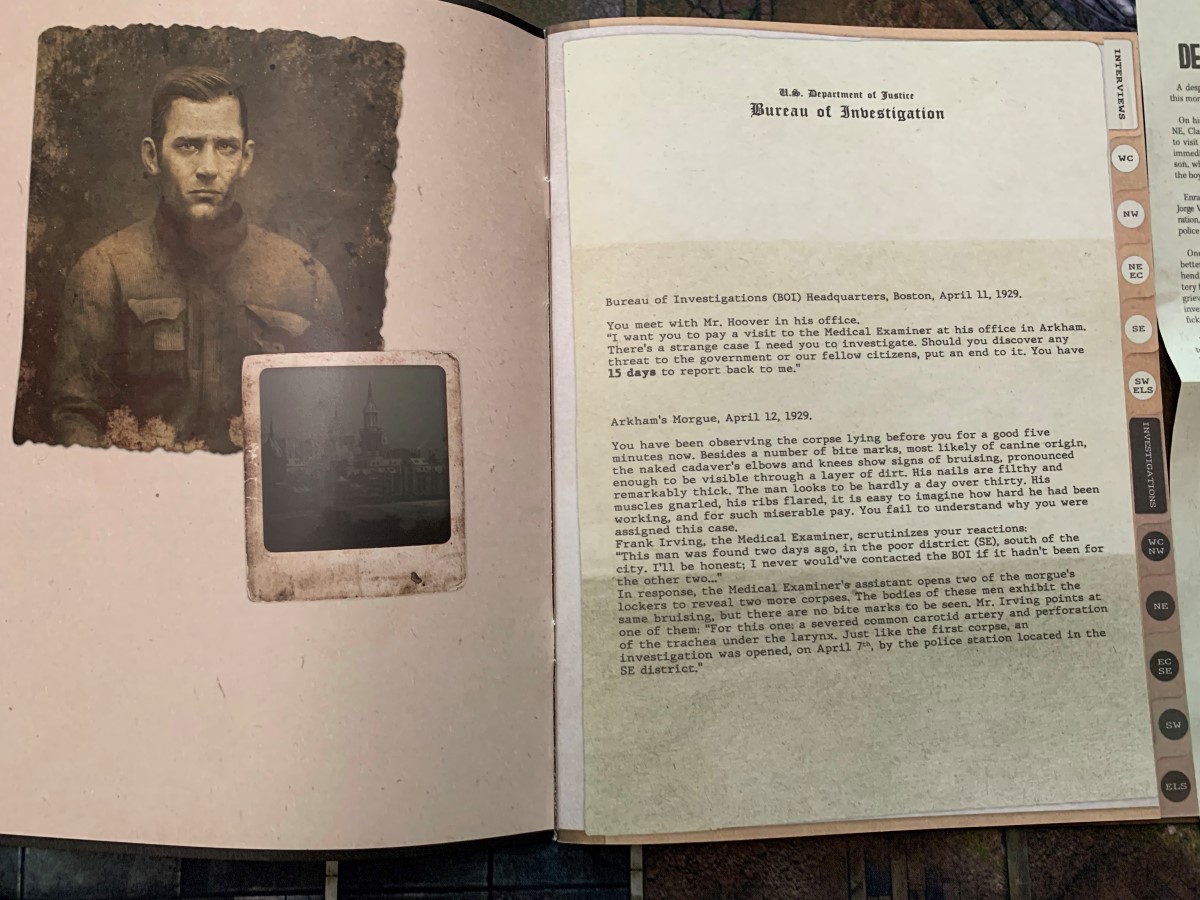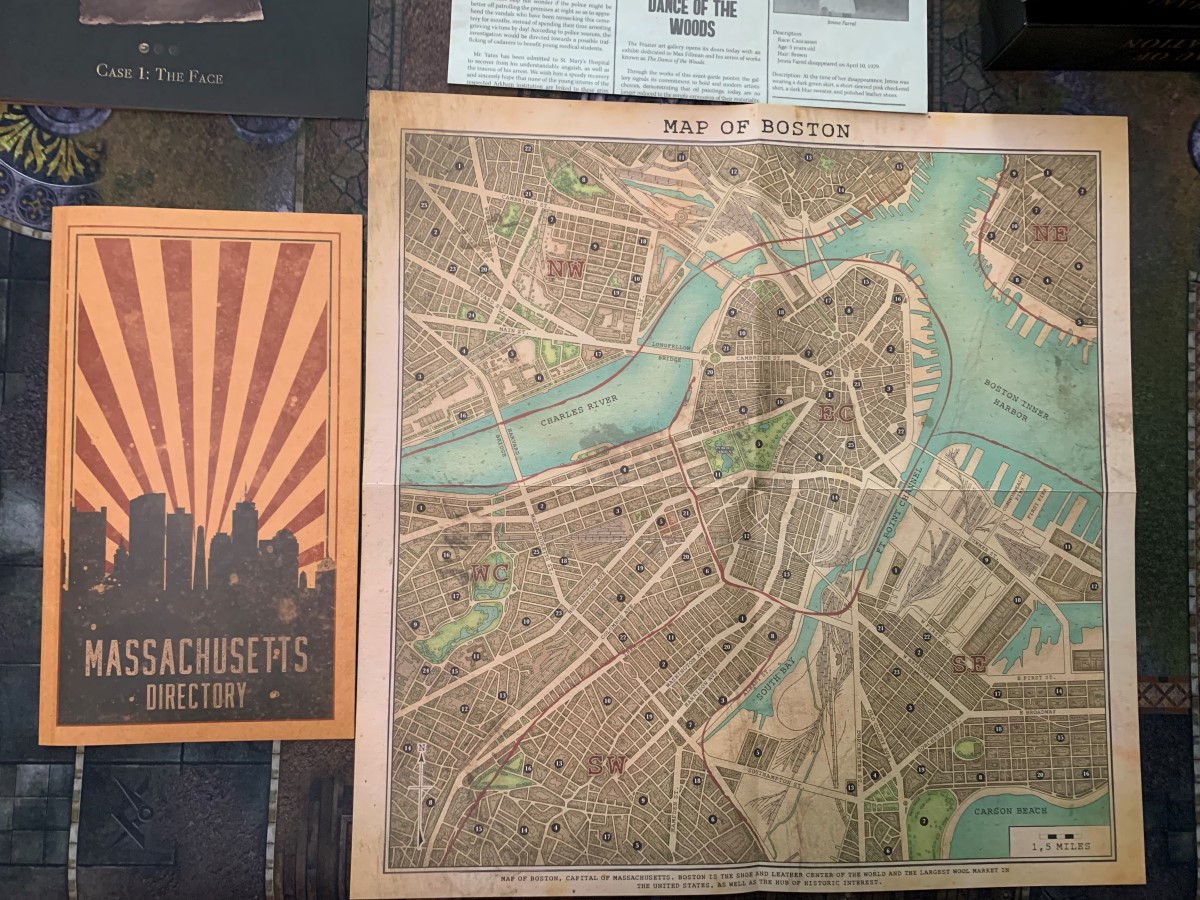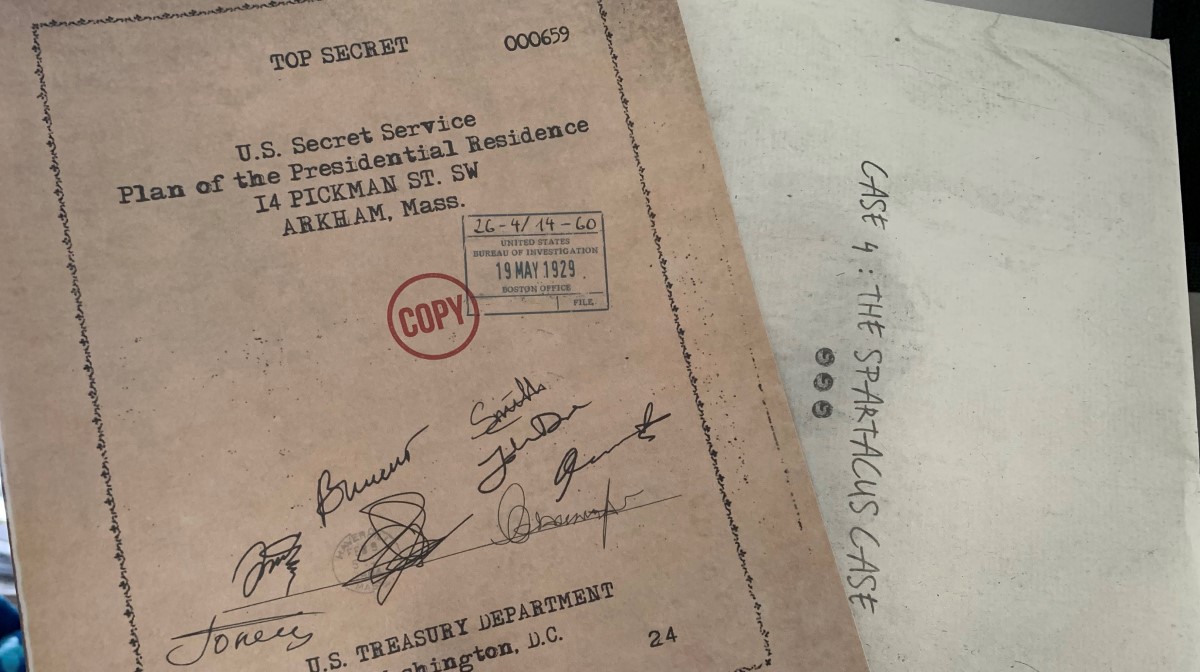There was a stretch of time while playing Bureau of Investigation where everyone at the table were hotly debating what to do next. The cryptic clues didn’t seem to add up. Our leads continued to fizzle. All we knew was that something truly diabolical was going on and we had no idea who was behind it, where they were doing it, and why. Much like an actual investigator in a cosmic horror story, what we didn’t understand continued to haunt us until the case’s conclusion. It might also be the largest ringing endorsement for what the developers intended.

How To Play Bureau of Investigation
Bureau of Investigation is a cooperative campaign board game. You and up to seven other players must work together in order to solve a case set in an alternate version of the 1920s inspired by the cosmic horror of H.P. Lovecraft. There are five different cases included; each one is completely self-contained. These cases include a case file with potential leads, a campaign book, two different maps, and a few physical props including a citizen directory and mock-ups of the local paper.
Once you have read the introduction to the case, your group will take turns investigating areas of interest and interrogating persons of note. Each location and person have a corresponding text entry in the campaign book, which will tell you what you discover. You only have a fixed number of turns to follow up on your leads. Once you have run out of turns, you must either name the culprit based on the information gathered or leave the case unsolved.
How Does It Feel To Play Bureau of Investigation?
This gameplay structure should be familiar to those who have played the Sherlock Holmes Consulting Detective board games. You and your fellow players are encouraged to take notes, keeping track of timelines, important characters, different pieces of evidence, etc.. The cases are well written with various entries naturally leading from one potential lead to the next, making you feel like an actual detective looking into a dangerous case. Finally, the physical props, despite being just different booklets and sheets of paper, do a great job putting you into the mindset of the era. When you sit down to play Bureau of Investigation, you can’t help but get into character.
But, these aren’t just regular cases. While the Sherlock Holmes Consulting Detective games are more grounded and plausible when it comes to the heinous acts you are looking into, Bureau of Investigation is steeped more in horror and the unknown. This is reflected in several ways. First, various entries in the campaign book are drenched in a foreboding atmosphere and tone. Thankfully, while there is violence and body horror in these cases, they are mostly implied. Second, there are plenty of red herrings and dead ends in each case. There is a good chance you will follow a lead that seems concrete on paper, only to discover what you are dealing with is far more bizarre and inscrutable than you initially thought.

But what keeps this from being unfair design is that some of these dead ends actually buy you more time. This is usually characterized by an entry where your detective calls the bureau and asks for an extension on the case. Because of this, lead designer Gregory Privat and developer Space Cowboys are able to maintain the tension and dread of a ticking clock in a cosmic horror detective story without undercutting the player.
This did lead to a few personal hiccups during my time with Bureau of Investigation. According to the rulebook, the five cases provided in the game are listed in order of difficulty. The first case: simply titled The Face, is meant to be the easiest. But when my group of investigators attempted it, we were turned around by multiple loose threads and dead ends. Some of these were genuine misinterpretations of evidence and leaps of logic. But there were a few leads that stopped dead to set the scene for eldritch knowledge and monstrous undertones…that also slammed the investigation to a halt.
What stops this from being bad design was when I ran the case again with a second group. Much like in a detective movie, we hit that exact same spot of uncertainty, only for an “a-ha” moment to present itself, allowing us to see the case to the end.
It is thanks to this greater impact that Bureau of Investigation justifies its smaller pile of cases. As mentioned before, a Sherlock Holmes Consulting Detective box contains ten cases, whereas this box contains only five. But when those cases are packed with horror vignettes, descents into dark dimensions, and unsettling unexplained phenomena, it adds a lot of replay value and atmosphere to the table.

Should I Buy Bureau of Investigation?
If you can tolerate a higher than normal barrier to entry with some atmospheric dead ends, Bureau of Investigation is a great Lovecraftian take on the Consulting Detective series. Each case is packed with intrigue and challenge. The writing switches perfectly between clinical professionalism and vivid dream logic. Finally the case file materials are compact while packed with personality. If you like detective games and want something a bit spookier, this is highly recommended.
The copy of Bureau of Investigation used for this review was provided by the publisher.




